第92章 The Revival of Antiquity Introductory (42)
It may be objected that the German painters at the beginning of the sixteenth century succeeded in representing with perfect mastery these scenes of country life, as, for instance, Albrecht Durer, in his engraving of the Prodigal Son.But it is one thing if a painter, brought up in a school of realism, introduces such scenes, and quite another thing if a poet, accustomed to an ideal or mythological framework, is driven by inward impulse into realism.Besides which, priority in point of time is here, as in the descriptions of country life, on the side of the Italian poets.
Discovery of Man To the discovery of the outward world the Renaissance added a still greater achievement, by first discerning and bringing to light the full, whole nature of man.This period, as we have seen, first gave the highest development to individuality, and then led the individual to the most zealous and thorough study of himself in all forms and under all conditions.Indeed, the development of personality is essentially involved in the recognition of it in oneself and in others.Between these two great processes our narrative has placed the influence of ancient literature because the mode of conceiving and representing both the individual and human nature in general was defined and colored by that influence.But the power of conception and representation lay in the age and in the people.
The facts which we shall quote in evidence of our thesis will be few in number.Here, if anywhere in the course of this discussion, the author is conscious that he is treading on the perilous ground of conjecture, and that what seems to him a clear, if delicate and gradual, transition in the intellectual movement of the fourteenth and fifteenth centuries, may not be equally plain to others.The gradual awakening of the soul of a people is a phenomenon which may produce a different impression on each spectator.Time will judge which impression is the most faithful.
Happily the study of the intellectual side of human nature began, not with the search after a theoretical psychology--for that, Aristotle still sufficed--but with the endeavor to observe and to describe.The indispensable ballast of theory was limited to the popular doctrine of the four temperaments, in its then habitual union with the belief in the influence of the planets.Such conceptions may remain ineradicable in the minds of individuals, without hindering the general progress of the age.It certainly makes on us a singular impression, when we meet them at a time when human nature in its deepest essence and in all its characteristic expressions was not only known by exact observation, but represented by an immortal poetry and art.It sounds almost ludicrous when an otherwise competent observer considers Clement VII to be of a melancholy temperament, but defers his judgement to that of the physicians, who declare the Pope of a sanguine-choleric nature; or when we read that the same Gaston de Foix, the victor of Ravenna, whom Giorgione painted and Bambaia carved, and whom all the historians describe, had the saturnine temperament.No doubt those who use these expressions mean something by them; but the terms in which they tell us their meaning are strangely out of date in the Italy of the sixteenth century.
As examples of the free delineation of the human spirit, we shall first speak of the great poets of the fourteenth century.
If we were to collect the pearls from the courtly and knightly poetry of all the countries of the West during the two preceding centuries, we should have a mass of wonderful divinations and single pictures of the inward life, which at first sight would seem to rival the poetry of the Italians.Leaving lyrical poetry out of account, Godfrey of Strassburg gives us, in 'Tristram and Isolt,' a representation of human passion, some features of which are immortal.But these pearls lie scattered in the ocean of artificial convention, and they are altogether something very different from a complete objective picture of the inward man and his spiritual wealth.
Italy, too, in the thirteenth century had, through the 'Trovatori,' its share in the poetry of the courts and of chivalry.To them is mainly due the 'Canzone,' whose construction is as difficult and artificial as that of the songs of any northern minstrel.Their subject and mode of thought represents simply the conventional tone of the courts, be the poet a burgher or a scholar.
But two new paths at length showed themselves, along which Italian poetry could advance to another and a characteristic future.They are not the less important for being concerned only with the formal and external side of the art.